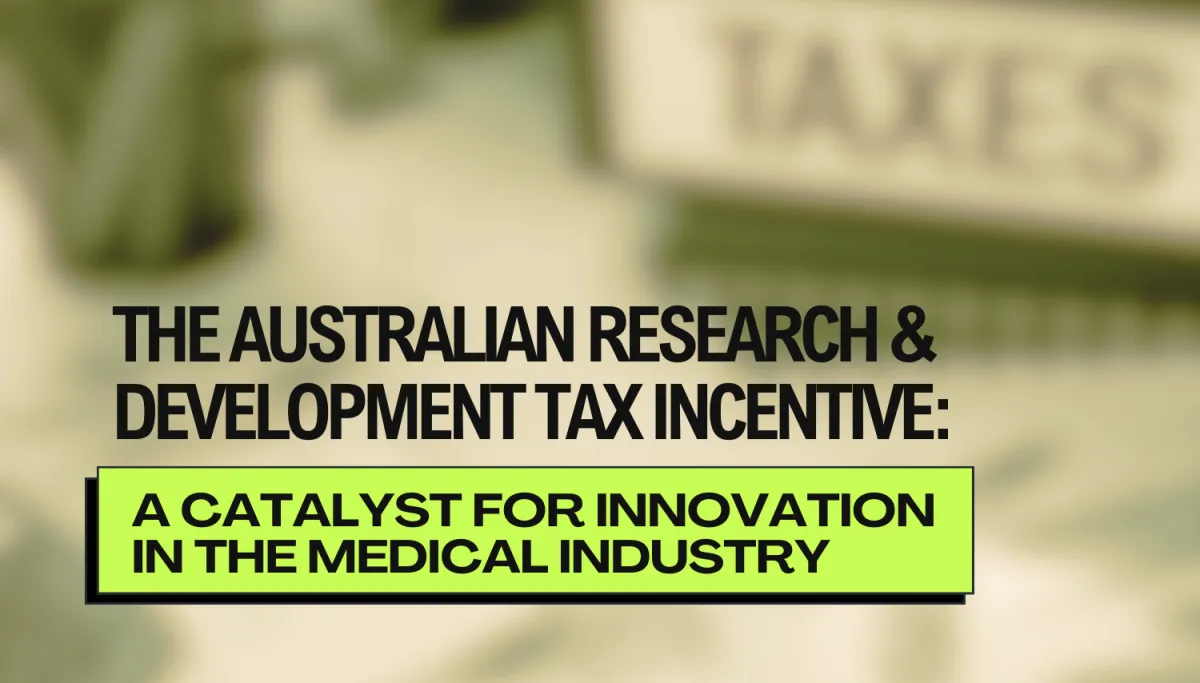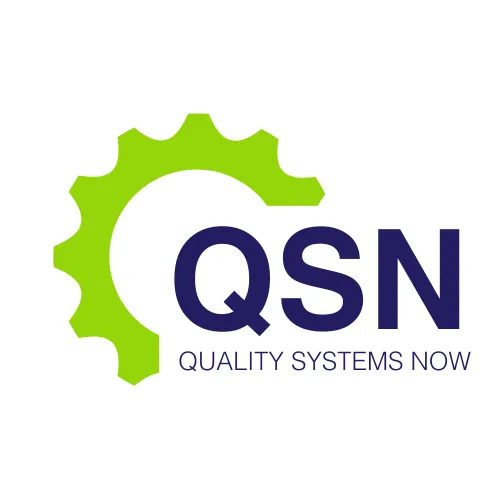Latest News

The Australian Research and Development Tax Incentive: A Catalyst for Innovation in the Medical Industry
The Australian Research and Development (R&D) Tax Incentive is a key governmental initiative designed to foster innovation and support businesses in their R&D endeavors.
Innovation in the medical industry is critical for the development of new treatments, medical devices, and healthcare solutions. The Australian Government, recognizing the importance of R&D, has implemented the R&D Tax Incentive to encourage businesses to invest in research activities. This incentive is particularly significant for the medical industry, where high costs and extended development timelines can be substantial barriers to innovation.
Overview of the R&D Tax Incentive
Objectives and Structure
The Australian R&D Tax Incentive is designed to:
Encourage industry investment in R&D.
Enhance the competitiveness of Australian businesses.
Foster collaboration between businesses and research organizations.
The incentive provides two core benefits:
Refundable Tax Offset: Available to eligible entities with an aggregated turnover of less than $20 million per annum, this offers a 43.5% refundable tax offset.
Non-Refundable Tax Offset: For larger entities, a 38.5% non-refundable tax offset is provided.
Eligibility Criteria
To qualify for the R&D Tax Incentive, businesses must meet specific criteria:
The entity must be incorporated in Australia.
The R&D activities must be classified as core or supporting R&D activities.
The R&D activities must generate new knowledge, including new or improved products, processes, or services.
Impact on the Medical Industry
Promoting Innovation
The R&D Tax Incentive has a profound impact on promoting innovation within the medical industry. Medical research often involves high-risk projects with uncertain outcomes. The financial support provided by the tax incentive reduces the financial risk, encouraging companies to invest in cutting-edge research and development.
Case Study: Pharmaceutical Development
Pharmaceutical companies benefit significantly from the R&D Tax Incentive. Developing a new drug requires extensive research, clinical trials, and regulatory approvals, often taking over a decade and costing billions of dollars. The tax incentive alleviates some of these financial burdens, allowing companies to invest more in innovative research, which can lead to breakthroughs in treatments for diseases such as cancer, diabetes, and neurological disorders.
Advancing Medical Devices
The development of medical devices, from diagnostic tools to advanced surgical equipment, is another area where the R&D Tax Incentive plays a crucial role. Companies developing these devices can leverage the tax incentive to fund prototype development, clinical testing, and regulatory compliance, accelerating the time-to-market for new technologies.
Enhancing Collaboration
The medical industry thrives on collaboration between businesses, universities, and research institutions. The R&D Tax Incentive encourages such partnerships by providing financial support for joint research projects. This collaboration not only enhances the quality of research but also facilitates the translation of academic discoveries into commercial medical products.
Challenges and Considerations
Compliance and Documentation
While the R&D Tax Incentive offers substantial benefits, businesses must navigate complex compliance and documentation requirements. Companies must meticulously document their R&D activities, expenditures, and outcomes to qualify for the incentive. This documentation process can be cumbersome, particularly for small and medium-sized enterprises (SMEs) with limited administrative resources. This is where Quality Systems Now can help your organisation with our expertise.
Uncertainty in Eligibility
Determining the eligibility of certain R&D activities can be challenging. The distinction between core and supporting activities is not always clear-cut, leading to potential disputes with regulatory authorities. Businesses must invest in understanding the guidelines and, in some cases, seek expert advice to ensure compliance.
Balancing Short-term and Long-term Goals
For medical companies, balancing short-term financial performance with long-term R&D investment is crucial. The R&D Tax Incentive provides immediate financial relief, but companies must strategically plan their R&D activities to ensure sustainable growth and innovation over the long term.
Future Directions
Increasing Awareness and Access
Increasing awareness of the R&D Tax Incentive, particularly among SMEs in the medical industry, is essential. The government can play a pivotal role by conducting outreach programs, workshops, and providing online resources to educate businesses about the benefits and application process of the tax incentive.
Streamlining the Application Process
Simplifying the application and compliance process can encourage more businesses to take advantage of the R&D Tax Incentive. Introducing more straightforward documentation requirements and providing clear guidelines on eligibility can reduce administrative burdens and make the incentive more accessible.
Enhancing Support for High-Risk Projects
Given the inherently high-risk nature of medical R&D, additional support mechanisms could be integrated with the R&D Tax Incentive. For instance, providing higher offsets or grants for projects with high potential but significant risk could further stimulate groundbreaking research in the medical field.
The Australian R&D Tax Incentive is a pivotal tool for fostering innovation and supporting the growth of the medical industry. By reducing financial risks and encouraging investment in research, the incentive plays a crucial role in advancing medical science and technology. Despite challenges related to compliance and documentation, the benefits of the R&D Tax Incentive are substantial. Continued efforts to increase awareness, simplify processes, and provide additional support for high-risk projects will further enhance its impact, ensuring that Australia remains at the forefront of medical innovation.
References:
Australian Government, "Research and Development Tax Incentive." Retrieved from https://business.gov.au/grants-and-programs/research-and-development-tax-incentive.
